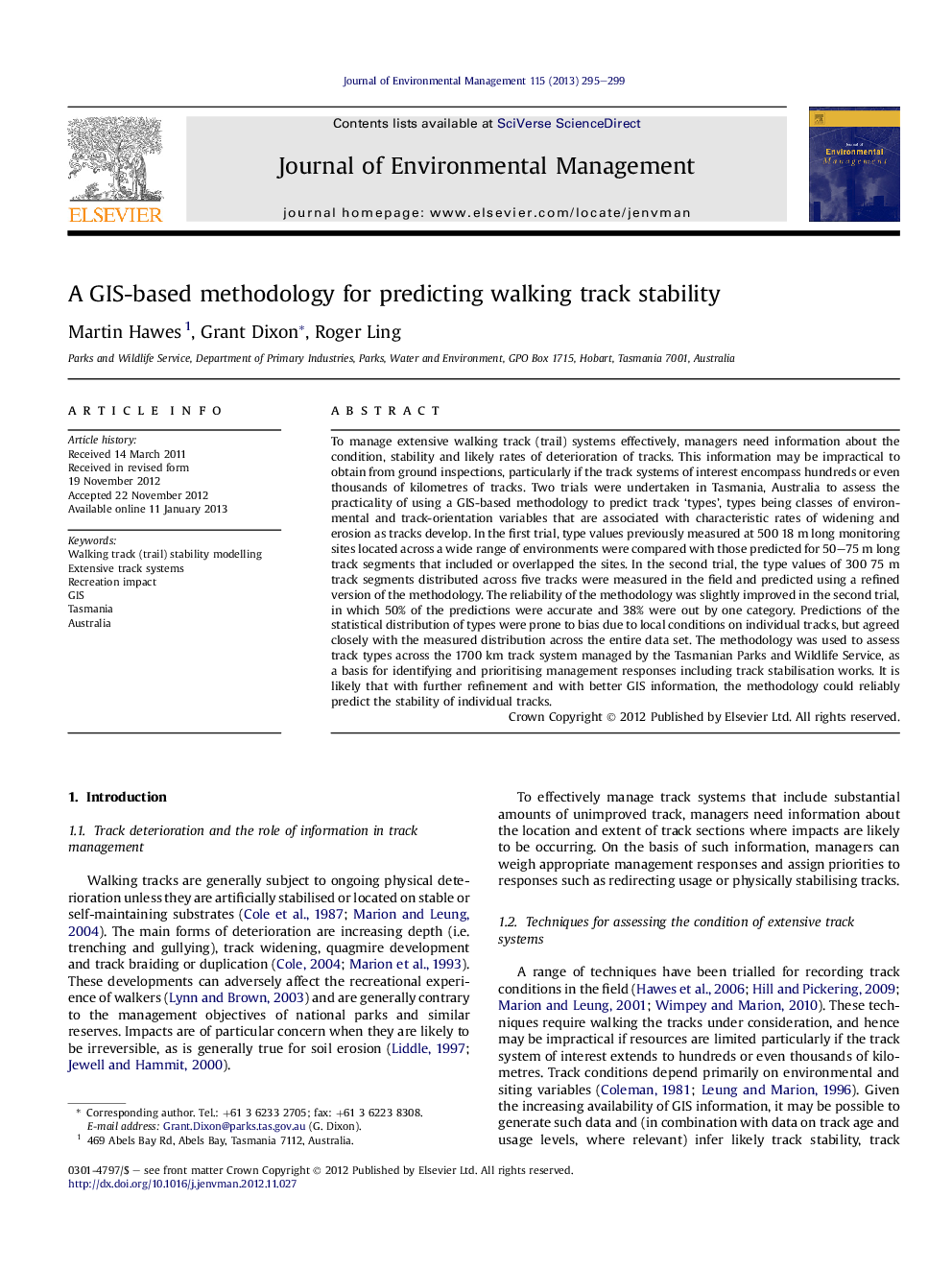| کد مقاله | کد نشریه | سال انتشار | مقاله انگلیسی | نسخه تمام متن |
|---|---|---|---|---|
| 1056252 | 1485297 | 2013 | 5 صفحه PDF | دانلود رایگان |

To manage extensive walking track (trail) systems effectively, managers need information about the condition, stability and likely rates of deterioration of tracks. This information may be impractical to obtain from ground inspections, particularly if the track systems of interest encompass hundreds or even thousands of kilometres of tracks. Two trials were undertaken in Tasmania, Australia to assess the practicality of using a GIS-based methodology to predict track ‘types’, types being classes of environmental and track-orientation variables that are associated with characteristic rates of widening and erosion as tracks develop. In the first trial, type values previously measured at 500 18 m long monitoring sites located across a wide range of environments were compared with those predicted for 50–75 m long track segments that included or overlapped the sites. In the second trial, the type values of 300 75 m track segments distributed across five tracks were measured in the field and predicted using a refined version of the methodology. The reliability of the methodology was slightly improved in the second trial, in which 50% of the predictions were accurate and 38% were out by one category. Predictions of the statistical distribution of types were prone to bias due to local conditions on individual tracks, but agreed closely with the measured distribution across the entire data set. The methodology was used to assess track types across the 1700 km track system managed by the Tasmanian Parks and Wildlife Service, as a basis for identifying and prioritising management responses including track stabilisation works. It is likely that with further refinement and with better GIS information, the methodology could reliably predict the stability of individual tracks.
► A GIS-based methodology is proposed for predicting walking track stability ‘types’.
► The reliability of the methodology was tested across a wide range of environments.
► The statistical distribution of types is predicted reliably for extensive track systems.
► The methodology is useful in planning management responses such as track ‘hardening’.
► The methodology was used to assess types across a 1700 km track system in Tasmania.
Journal: Journal of Environmental Management - Volume 115, 30 January 2013, Pages 295–299